
ON THE CASTLE ESPLANA
STANDING ATOP THE battlements of Edinburgh Castle is a surreal experience. Looking over the ramparts, it is almost disappointing not to see besieging hordes and giant war machines instead of Princes Street, Edinburgh’s busiest shopping thoroughfare.
The castle is a strange mixture of old and new that effortlessly draws the visitor back to a world where history seems only yesterday and mythology was real. From the wooden fortress that once occupied the site above an extinct volcano, 300 Goddodin warriors, sons of the original Britons, rode forth against 54,000 Angles. Ancient poetry records that these men knew King Arthur. Malcolm Cranmore, who slew Macbeth, lived in the castle with Margaret, his queen. Her chapel still stands within the walls.
When held by Edward I of England, Edinburgh Castle was a major thorn in Scotland’s side. Despite changing hands many times, by politics or siege, it has only been taken by force twice in its 800-year history, both times by Scottish armies. Mary Queen of Scots, cousin of Elizabeth I of England, gave birth there. Her son, James, would unite Scotland and England in 1603 when he became king. These days, visitors to the castle pass between statues of William Wallace and Robert the Bruce.
Over the centuries Scottish soldiers have marched out the castle gates to every war the British empire has ever fought. At the head of the line, more often than not, would be a piper. In desperate charges over trenches, or in defiant stands against overwhelming forces, the piper carried nothing but his bagpipes and the honor of the regiment, knowing the ordinary “Jock” would defend them with his claymore or his last bullet.
In 17th-century Holland, however, the regimental piper had a somewhat more peaceful role to play. As soldiers will the whole world over, the off-duty Scots would find their way to the local hostelry and lose all track of time.
At the end of each evening the pipes and drums would parade through town and the carousing soldiers would be “encouraged” to join them for a brisk walk back to barracks. The sergeants would shout, “Doe den tap toe!” (“Turn off the taps,” in Dutch).
Tap toe became “tattoo,” and military bands in Holland, Germany and Britain adopted the name. One tattoo in particular would go on to fame beyond its borders. The bagpipes and drums that once led Scots to fight in the far corners of the world would call the world back to Edinburgh.
The first Edinburgh Festival was held in 1947. The army was invited to participate, and regimental bands played a few tunes in front of the castle. During the next festival they decided to take their music to the people and performed in Princes Street. These first few bands so caught the public’s attention that the festival organizers asked the army to put on a full military show on the castle esplanade in 1949, the first Edinburgh Military Tattoo. The next year, the event attracted 100,000 people over three weeks. Her Majesty the Queen and Princess Margaret attended the closing performance.
In 1952 the Low Countries connection was maintained when the Royal Netherlands Grenadiers became the first non-British band to participate. By the mid-1960s the popularity of the event was such that the BBC sent broadcast tapes to television networks all over the world.
Each event ends with a haunting lament from a Lone Piper, high in the castle battlements. During one performance the Lone Piper was lowered to the battlements by helicopter. Or so it seemed. Actually, it was a stunt double. The army rates its trained pipers too highly to drop them out of the sky. This is not to say the pipers aren’t hardy. Each musician performing is a trained soldier first and a musician second.
[caption id="ThePipesArecallingtotheEdinburghMilitaryTattoo_Feature" align="aligncenter" width="1024"]
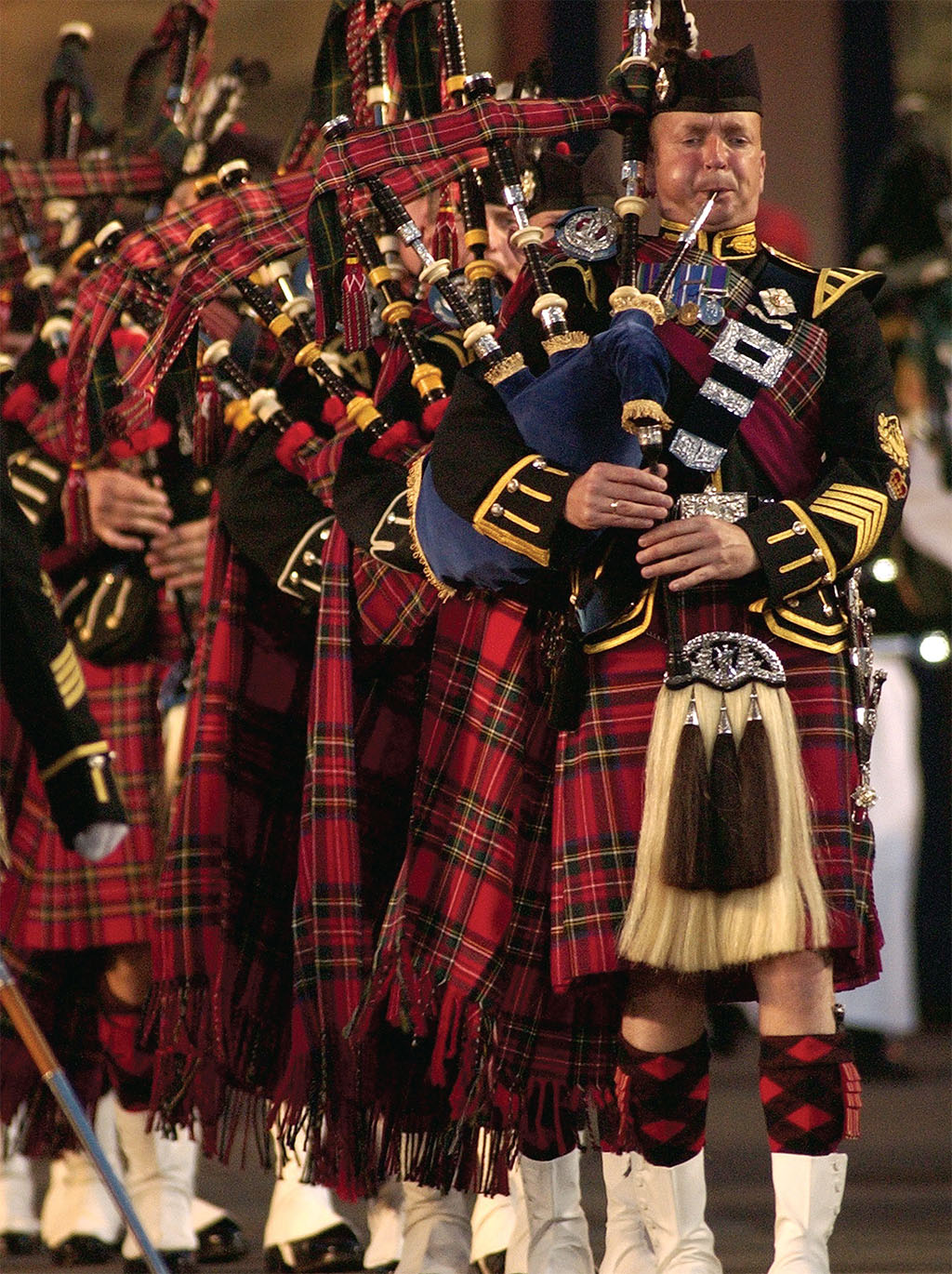
Courtesy of the Edinburgh Military Tattoo
[caption id="ThePipesArecallingtotheEdinburghMilitaryTattoo_img1" align="aligncenter" width="471"]
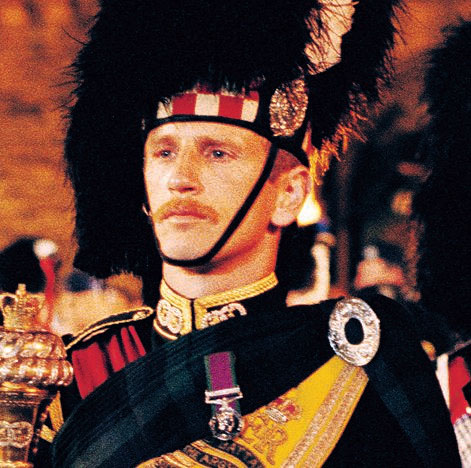
©David Lyons/Alamy
Over the centuries Scottish soldiers have marched out the castle gates to every war the empire has ever fought.
More than 11 million people have watched the tattoo live, and each year another 100 million will watch it on television in more than 30 countries. As the audience settles down for the show to begin, it is a safe bet that at least a third of them will have traveled from overseas to be there.
Over the years, spectators have been treated to pipe bands, flag wavers, dancers, cavalry brigades, drill teams, gunnery squads and motorbike stunt teams. Participants have come from the armed forces and police services of many countries, including the United States, Canada, Russia, Nepal, Saudi Arabia, New Zealand, Jordan, Korea, Italy, France, Greece, Denmark, South Africa and Ireland.
The Edinburgh Tattoo is bigger than any one person, but a few extraordinary men have left their mark on it. Staff Sergeant Thomas “Tam” McKay, MBE, fired the 1 o’clock gun from Edinburgh Castle for 27 years. He was the one who looked after the many foreign contingents taking part in the tattoo every year. Much-loved by visitors and even foreign royalty, Tam lost his last battle to cancer in 2005. Now the bands have a new tune for their repertoires, called “Tam the Gun.”
Then there is the man who took the tattoo from being merely a success to the point where enough tickets can’t be sold to meet demand. Producer of the tattoo since 1994, Brigadier Melville Jameson was less than enthusiastic about taking on the event at first, but, as he says, “When you’re asked by a general if you will do something, you salute sharpish and depart!”
A piper himself, the brigadier confesses his dream has long been to fill the castle esplanade with pipes and drums—“Wall to wall pipes and drums, played by the finest musicians anyone could witness anywhere in the world.” For Jameson, who has decided to retire and pass the baton, the 2006 performance will be an emotional one. The next organizer will inherit a spectacular, world-renowned event, healthier and more exciting than ever.
These days the Lone Piper needs no stunts or helicopters to attract attention. As he plays his moving farewell to the day, the audience cannot help but feel a communion with boys marching to an uncertain fate, parents sending silent prayers into the evening sky and soldiers forcing themselves through fear and on to glory. It is a tribute to those who have gone before, it is a thank you to those who have come to listen and it joins them all in a community of souls.
A Scottish folk tune that’s often played at the tattoo is “Will ye no’ come back again?” Deep into the evening, as the tired and satisfied audience makes its way down the cobbled Royal Mile, the answer in many a mind will assuredly be, “Yes! I can’t wait to come back again.”
[caption id="ThePipesArecallingtotheEdinburghMilitaryTattoo_img2" align="aligncenter" width="1024"]
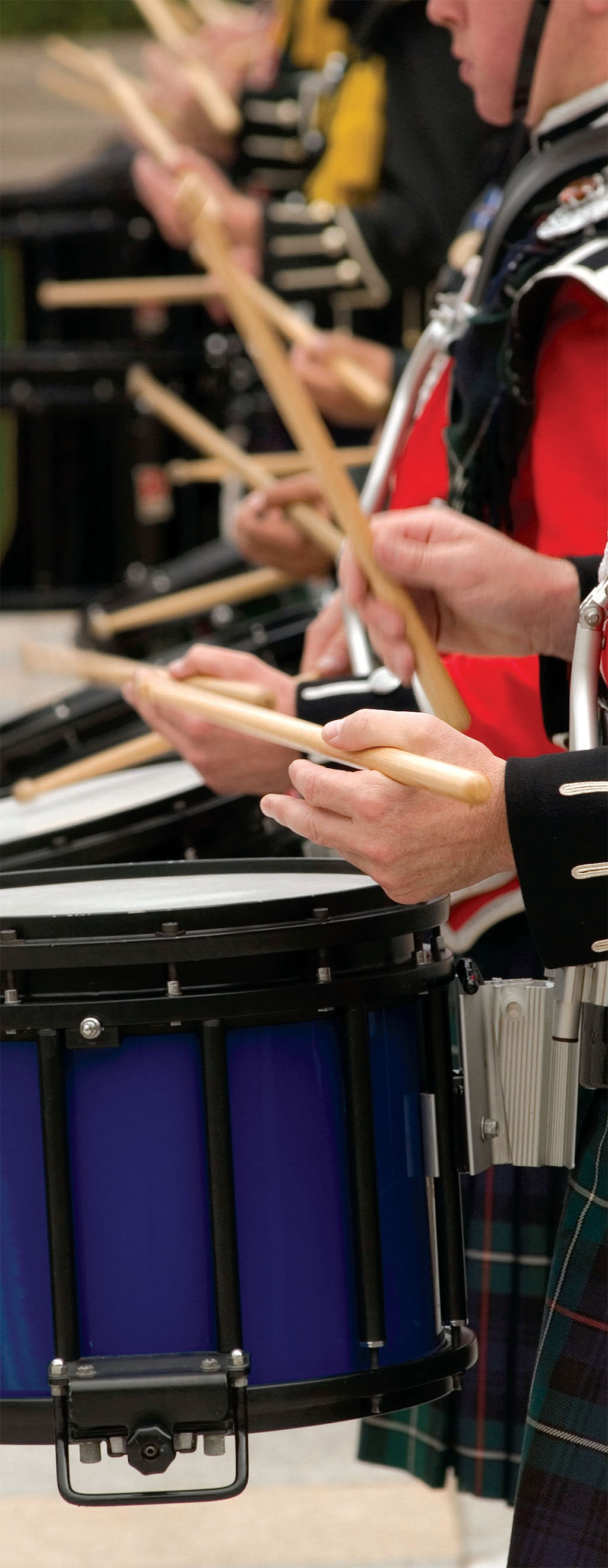
©MARCO SECCHI/ALAMY
[caption id="ThePipesArecallingtotheEdinburghMilitaryTattoo_img3" align="aligncenter" width="1024"]
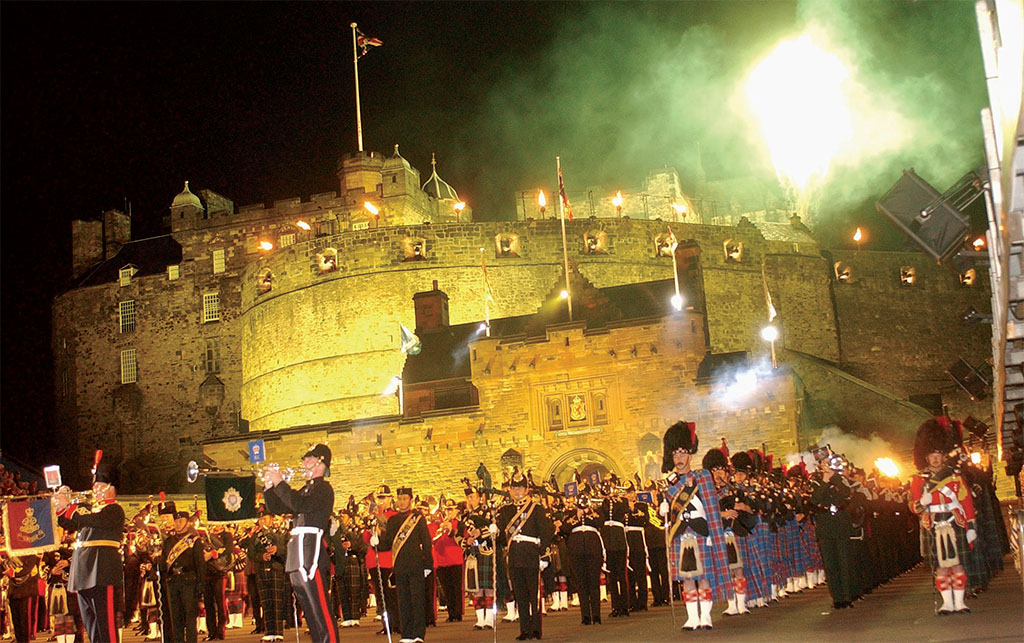
COURTESY OF THE EDINBURGH MILITARY TATTOO
[caption id="ThePipesArecallingtotheEdinburghMilitaryTattoo_img4" align="aligncenter" width="1024"]
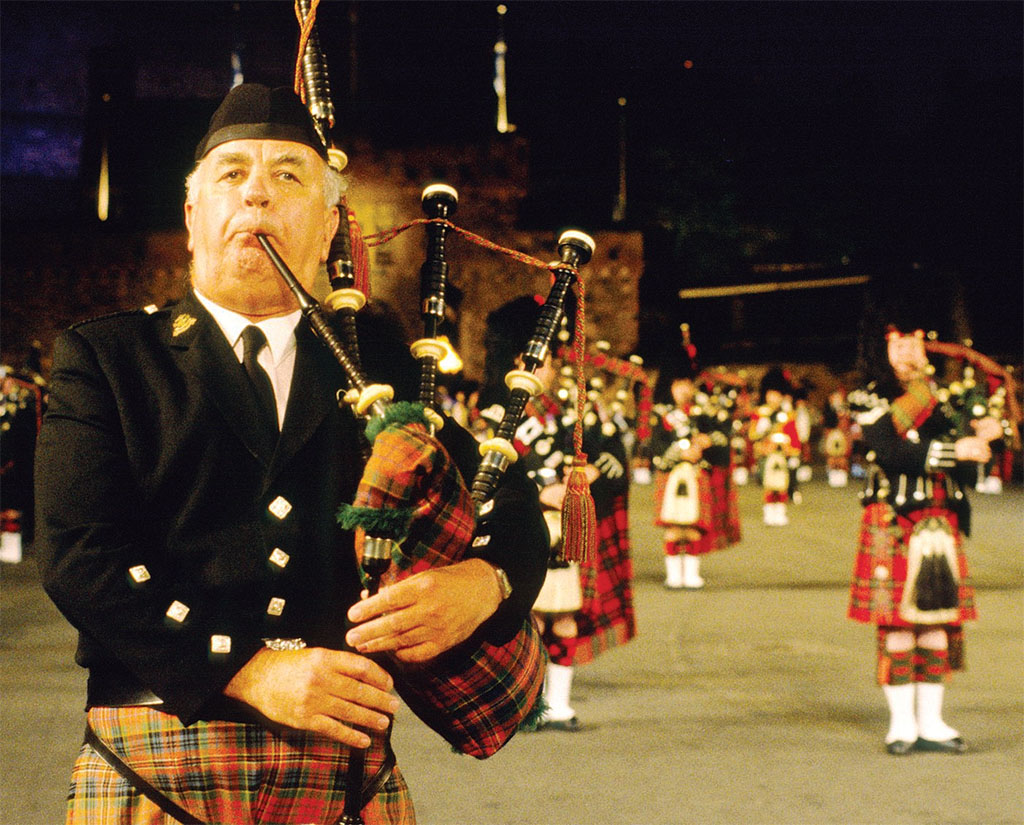
©DAVID LYONS/ALAMY
[caption id="ThePipesArecallingtotheEdinburghMilitaryTattoo_img5" align="aligncenter" width="678"]
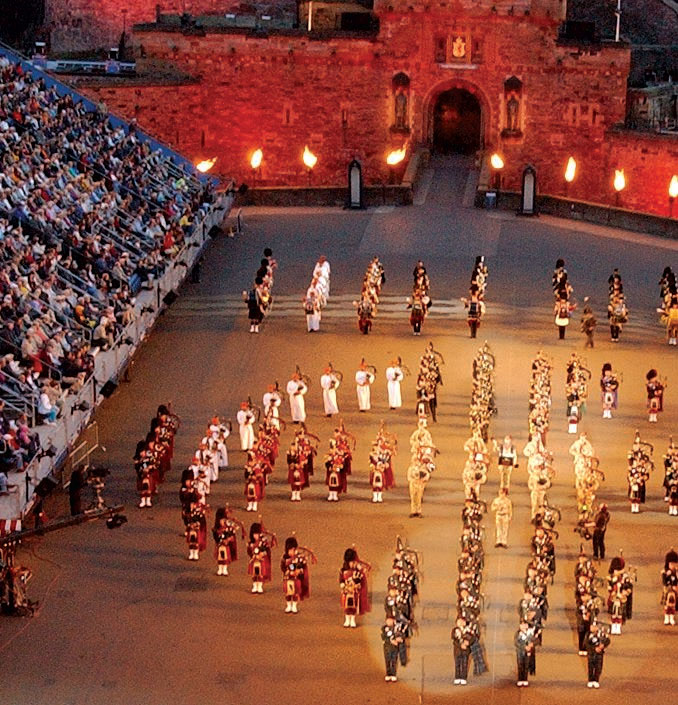
COURTESY OF THE EDINBURGH MILITARY TATTOO





Comments